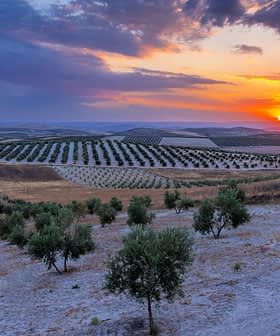 8.2K reads
8.2K readsNews Briefs
US Surpasses Spain as Second-Largest Olive Oil Consumer
In 2023, the United States surpassed Spain to become the world’s second-largest consumer of olive oil, consuming 375,000 tons, with Italy remaining the top consumer at 410,000 tons. The trend is attributed to a growing presence of olive oil in the U.S. market, combined with production declines in Spain, leading to increased American consumption and a potential shift in global consumption patterns.
The United States became the world’s second-largest consumer of olive oil for the first time in 2023, overtaking Spain.
According to data from the European Commission, the U.S. Department of Agriculture and the International Olive Council, the U.S. consumed 375,000 tons of olive oil in 2023.
It would not surprise me that the U.S. could become the world’s largest consumer by 2030
Italy remained the world’s top olive oil consumer with 410,000 tons, while Spain fell to third at 300,000 tons.
Juan Vilar, chief executive of agricultural and olive oil consultancy Vilcon, said a combination of the growing presence of olive oil in the U.S. and the sharp production decline experienced in Spain in the past two harvests have fueled the trend.
See Also:Inflation Cuts Premium Food Sales in U.S., but Not EVOO“Americans are increasingly concerned about olive oil and more familiar because they are also olive oil producers,” he said.
Vilar added that many of the world’s largest olive oil companies have expanded aggressively in the U.S. market, conducting consumer surveys to determine the organoleptic profiles Americans seek.
“Most companies from outside the United States are adapting to the profile of American consumption patterns, and therefore, this has also caused an increase in consumption,” he said.
Since the onset of the Covid-19 pandemic, consumers in the United States have also paid increasing attention to olive oil’s health benefits, which Vilar said has further contributed to the trend of increasing American consumption.
Juxtaposed with increasing U.S. consumption, Spaniards are buying less olive oil after poor harvests in the 2022/23 and 2023/24 crop years contributed to unprecedented price increases.
“Due to the price increases, Spanish consumption fell about 47 percent,” Vilar said. “Spain consumed about 260,000 fewer tons of olive oil in 2023.”
Joseph R. Profaci, the executive director of the North American Olive Oil Association (NAOOA), a trade group, said U.S. consumers view olive oil differently than their southern European counterparts.
He has a theory that olive oil consumption is widely a conscious decision for U.S. consumers rather than a cultural inheritance as it is in Mediterranean countries.
“The difference is that in the U.S., the consumer base (at least millennials and boomers who did not grow up in households using olive oil) made an intentional choice to start using olive oil for health and or taste reasons,” he said.
“In Spain and elsewhere, using olive oil wasn’t an intentional choice for their consumer base; it was part of their DNA,” Profaci added. “For this reason, I believe that the consumers in traditional countries, when faced with higher prices all of a sudden, are much more likely than their American counterparts to switch to something else.”
Vilar agreed, pointing out that extra virgin olive oil prices at retail in the U.S. already exceeded $10 per liter, and have not increased as much due to differing pricing dynamics.
“For a major part of the U.S. market (i.e., private label, which comprises 40 percent of all retail sales), until very recently prices have not gone up much at all as a result of contract pricing,” Profaci added.
Along with the delay to the kind of price rises experienced in Europe, many U.S. consumers are in a better financial situation than European consumers, allowing them the flexibility to pay higher prices, in general.
While the U.S. may consume more olive oil than Spain in 2023 and 2024, Vilar believes this trend will reverse after the next bumper harvest in Spain, when production returns to its previous average of about 1.4 million tons.
“The United States will consume more and more olive oil, but what will happen is that when there is a large harvest, there will be a price drop in Spain, and consumption will recover,” Vilar said.
“It is very likely that from this increase in production in a year or two, Spain will once again be the second largest consumer of olive oil in the world,” he added.
However, Profaci, Vilar and other experts predict that the United States will consistently consume more olive oil than Spain and possibly overtake Italy as the world’s largest olive oil consumer by the end of the decade.
“It would not surprise me that the U.S. could become the world’s largest consumer by 2030,” Profaci said. “If we are successful in establishing an olive oil research and promotion program under the United States Department of Agriculture, I would bet it will happen before then.”









